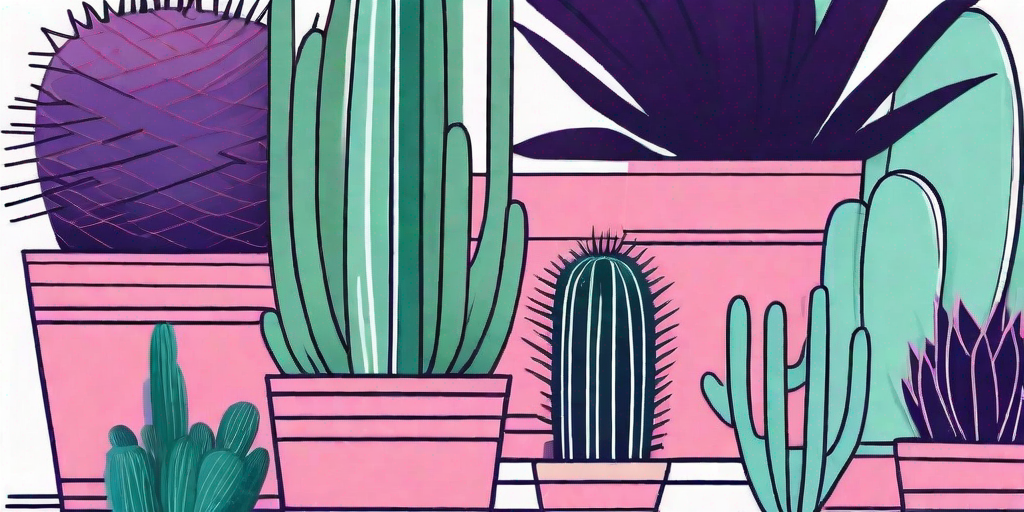
If you're the type of person who believes that a house isn't a home without a bit of greenery, then this is for you. Or perhaps you're the type who can't even keep a cactus alive. Don't worry, we've all been there. But what if I told you there's a plant that's not only hardy and low-maintenance, but also adds a pop of color to your indoor garden? Enter the purple cactus. Yes, you read that right. Purple. Cactus.
What is a Purple Cactus?
Before we dive into the nitty-gritty, let's clear up some confusion. When we say "purple cactus," we're not talking about a cactus that's been spray-painted or dyed. No, we're talking about a naturally occurring, absolutely stunning, purple-hued cactus. The scientific name for this plant is Opuntia violacea, but it's also known as the Santa Rita prickly pear or the violet prickly pear.
Native to the desert regions of the southwestern United States and northern Mexico, this cactus is known for its vibrant, purple pads that can range from a soft lavender to a deep, rich violet. Depending on the amount of sunlight and cold it receives, the color can intensify or fade, making it a living, breathing piece of art.
Why Should You Add a Purple Cactus to Your Indoor Garden?
Now that we've established what a purple cactus is, let's talk about why you should consider adding one to your indoor garden. First of all, it's purple. Need we say more? But if you need more convincing, here are a few reasons:
They're Low-Maintenance
Like all cacti, the purple cactus is a succulent, meaning it stores water in its pads, making it incredibly drought-tolerant. This makes it perfect for those of us who are forgetful waterers or are often away from home. It's also resistant to most pests, so you won't have to worry about creepy crawlies invading your space.
And the best part? It doesn't need a lot of light to thrive. While it does enjoy a bit of sunbathing, it can also tolerate lower light conditions, making it a great choice for apartments or rooms with limited natural light.
They're Beautiful
Let's face it, the purple cactus is a stunner. Its vibrant color and unique shape make it a standout addition to any indoor garden. Plus, in the spring and summer, it produces beautiful, yellow flowers that contrast beautifully with the purple pads.
Not only that, but the color of the pads can change throughout the year, depending on the amount of sunlight and cold it receives. This means your cactus can go from a soft lavender in the winter to a deep, rich violet in the summer, providing a constantly changing display of color.
How to Care for Your Purple Cactus
Now that you're convinced you need a purple cactus in your life, let's talk about how to care for it. Don't worry, it's not as hard as you might think.
Watering
The key to watering your purple cactus is to remember that it's a desert plant. This means it's used to dry conditions and doesn't like to have wet feet. The best approach is to water it thoroughly and then let the soil dry out completely before watering again.
During the winter months, when the plant is dormant, you should reduce watering to once a month or even less. Overwatering is the quickest way to kill a cactus, so when in doubt, it's better to underwater than overwater.
Light
While the purple cactus can tolerate lower light conditions, it does best in bright, indirect light. A south or east-facing window is ideal. If you don't have a suitable window, you can also use a grow light.
Keep in mind that too much direct sunlight can cause the pads to scorch, so if you notice the color fading or the pads getting soft, it might be getting too much light.
Soil
The purple cactus prefers a well-draining soil mix. You can buy a pre-made cactus mix, or make your own by mixing one part potting soil with one part coarse sand or perlite.
It's also a good idea to use a pot with drainage holes to prevent water from sitting in the bottom of the pot.
FAQs
Can I propagate my purple cactus?
Yes, you can! Simply cut off a pad at the joint, let it dry for a few days to form a callus, and then plant it in cactus mix. Water sparingly until roots form.
Is the purple cactus safe for pets?
While not toxic, the spines can be a hazard to curious pets (and humans!). It's best to keep it out of reach of pets and children.
Why is my purple cactus turning green?
If your purple cactus is turning green, it might not be getting enough sunlight. Try moving it to a brighter location.
Conclusion
So there you have it, everything you need to know about the purple cactus. Whether you're a seasoned plant parent or a newbie, this vibrant, low-maintenance plant is a great addition to any indoor garden. So why not add a pop of color to your space with a purple cactus? Your Instagram feed will thank you.















